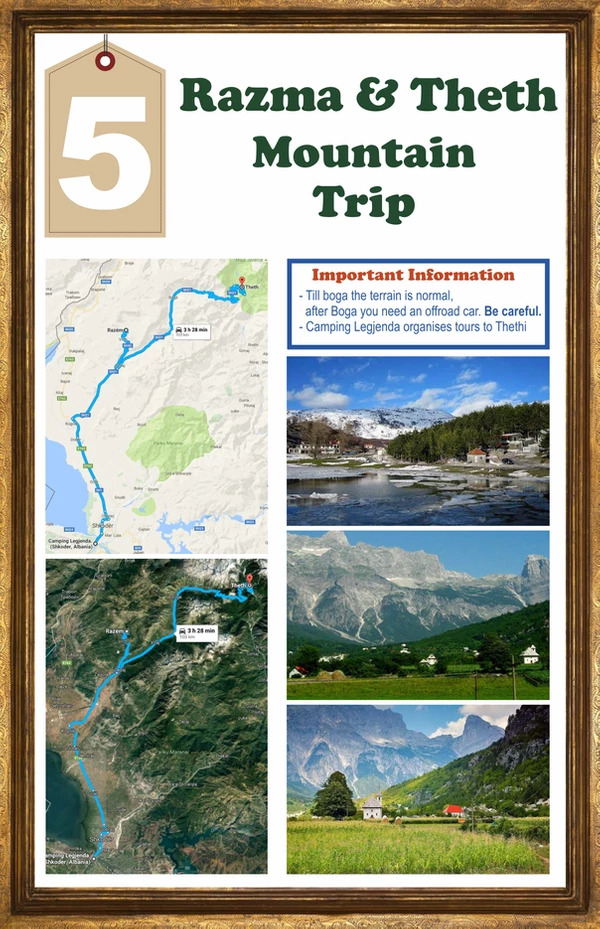
RAZMA & THETH MOUNTAIN TRIP
Theth (definite Albanian form: Thethi) is a community in the former Shalë, Albania.[1] Following the 2015 local government reform it became part of the municipality Shkodër, and has been declared a Protected Historic Center by the Albanian Government.[2][3] The community is at the centre of the Theth National Park, an area of outstanding natural beauty.
HISTORY
Local tradition asserts a single common ancestor for the community (one Ded Nika) and suggests that the population moved to Theth some 300 to 350 years ago in order to preserve their (Catholic) Christian traditions.[4] Visiting Theth in the early 20th century, the traveller Edith Durham said: I think no place where human beings live has given me such an impression of majestic isolation from all the world.[5] Durham described Theth as a “bariak” of some 180 houses and also observed that it was almost free from the tradition of blood feud (known in the Albanian language as Gjakmarrja) which so blighted other parts of the Albanian highlands.[5]
Modern[edit]
Grunas waterfall Theth remains remote. It is most easily accessible by a 25 km unmade road from the village of Boga which is impassable during the winter months and is not generally suitable at any time of the year for motor vehicles without off-road capabilities. Although the Kanun (traditional Albanian law) remains influential, Theth has not suffered from the recent (post-Communist) reappearance of the blood feud which has troubled other areas of Northern Albania.[4] Ironically, Theth boasts one of the very few remaining “lock-in towers”, an historical form of protection for families that were “in blood”.[6] Depopulation represents a serious long-term challenge for the community. The population has been greatly reduced over the past few decades and the majority of those remaining occupy Theth only during the summer months. However, the community has a nine-grade school and recent efforts have been made to stimulate tourism. A number of local families offer board and lodging to visitors who come to Theth to hike in the National Park – or merely to admire the mountain scenery.[6] Apart from the lock-in tower, other attractions include spectacular waterfalls, a working watermill (still used to grind the local inhabitants’ corn) and a modest ethnographic museum.[6] There are now two projects working in the vicinity, aiming at improving and helping the tourist infrastructure in the area. A Balkans Peace Park Project is working towards the creation of a park extending across the borders of Albania, Montenegro and Kosovo and has taken a lead in recent years in encouraging sustainable and ecologically sensitive tourism in and around Theth (for example by funding the marking of footpaths). Project Albanian Challenge has built a new bridge, which connects Theth to the nearby Grunas waterfalls over river Nanrreth. The project has also improved the marking of the trail to Curraj i Epërm, and has marked another approx. 80 kilometers of brand new trails in the nearby valleys, and created an opensource, free map of the area.Visiting Theth in the early 20th century, the traveller Edith Durham said: I think no place where human beings live has given me such an impression of majestic isolation from all the world.[5] Durham described Theth as a “bariak” of some 180 houses and also observed that it was almost free from the tradition of blood feud (known in the Albanian language as Gjakmarrja) which so blighted other parts of the Albanian highlands.[5]
Modern[edit]



